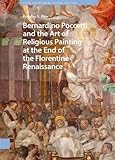Bernardino Poccetti and the Art of Religious Painting at the End of the Florentine Renaissance / Douglas Dow.
Material type: TextSeries: Visual and Material Culture, 1300 –1700 ; 49Publisher: Amsterdam : Amsterdam University Press, [2023]Copyright date: ©2023Description: 1 online resource (320 p.)Content type:
TextSeries: Visual and Material Culture, 1300 –1700 ; 49Publisher: Amsterdam : Amsterdam University Press, [2023]Copyright date: ©2023Description: 1 online resource (320 p.)Content type: - 9789048550951
- 709.945
- online - DeGruyter
| Item type | Current library | Call number | URL | Status | Notes | Barcode | |
|---|---|---|---|---|---|---|---|
 eBook
eBook
|
Biblioteca "Angelicum" Pont. Univ. S.Tommaso d'Aquino Nuvola online | online - DeGruyter (Browse shelf(Opens below)) | Online access | Not for loan (Accesso limitato) | Accesso per gli utenti autorizzati / Access for authorized users | (dgr)9789048550951 |
Browsing Biblioteca "Angelicum" Pont. Univ. S.Tommaso d'Aquino shelves, Shelving location: Nuvola online Close shelf browser (Hides shelf browser)
Frontmatter -- Table of Contents -- List of Illustrations -- List of Abbreviations -- Acknowledgments -- Introduction: ‘Il primo huomo da dipingere in fresco, che sia in questi paesi’ -- 1. ‘Grandemente inclinato all’Arte del Disegno’ -- 2. ‘Le prime cose lodevoli molto’ -- 3. ‘Locum ecclesiae designavit, quae Ioannis et uxoris pecunia extructa est’ -- 4. ‘Miracula et alia id genus’ -- Color Plates -- 5. ‘L’inventore di dipingere tutte le muraglie della nostra chiesa’ -- Conclusion -- Bibliography -- Index
restricted access online access with authorization star
http://purl.org/coar/access_right/c_16ec
By almost any measure Bernardino Barbatelli, called Poccetti, was a successful and sought after painter in late sixteenth-century Florence, but his works have remained largely overlooked. This study situates representative examples of his religious painting within their respective contexts to demonstrate how Poccetti and his patrons negotiated the increasingly fraught terrain of sacred painting in the period of religious reform. These case studies demonstrate how patrons ranging from the Dominicans to the Carthusians to prominent Florentine patricians relied on Poccetti’s skill in creating compelling narratives that reflected current concerns within the Catholic world. In the process, Poccetti invoked an august Florentine tradition of fresco painting, shaping it to better address the demands placed on religious imagery at the end of the Renaissance.
Mode of access: Internet via World Wide Web.
In English.
Description based on online resource; title from PDF title page (publisher's Web site, viewed 06. Mrz 2024)









